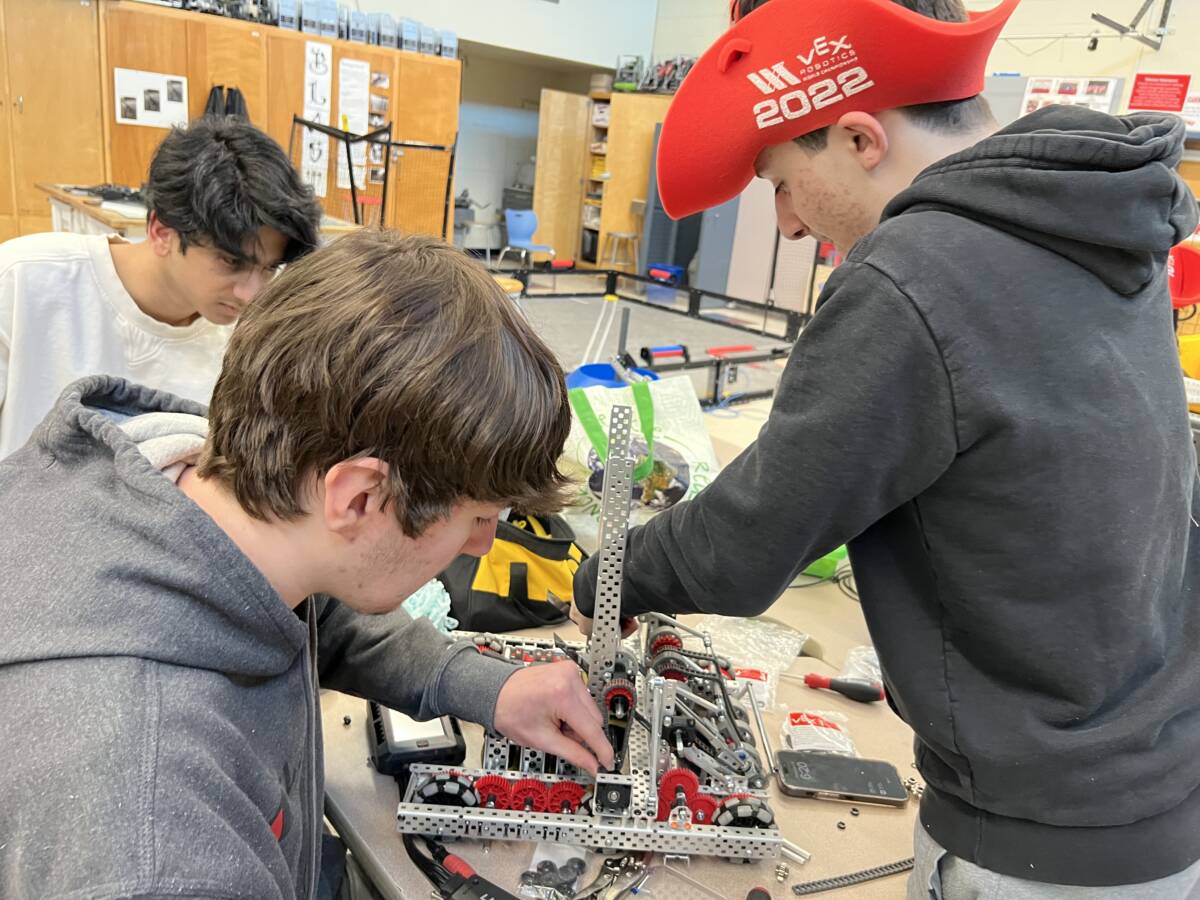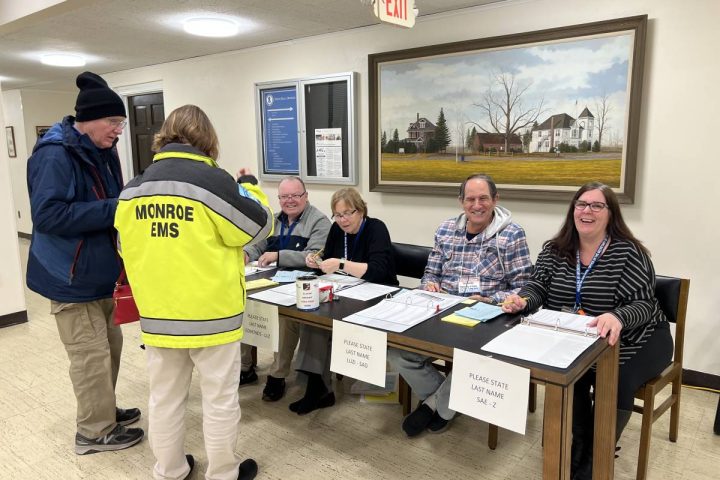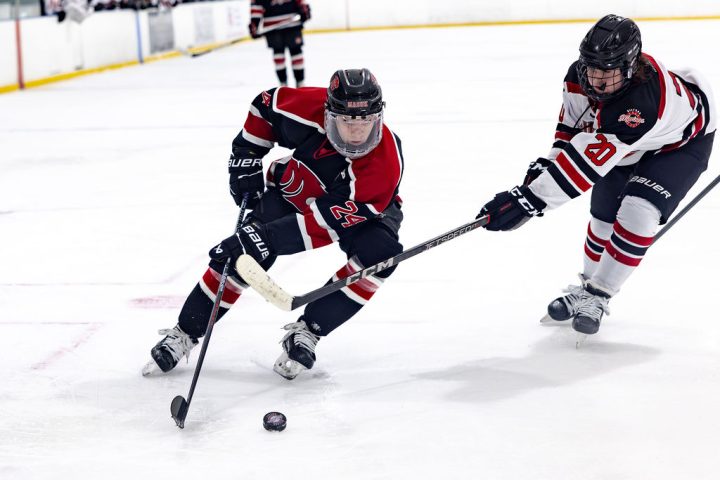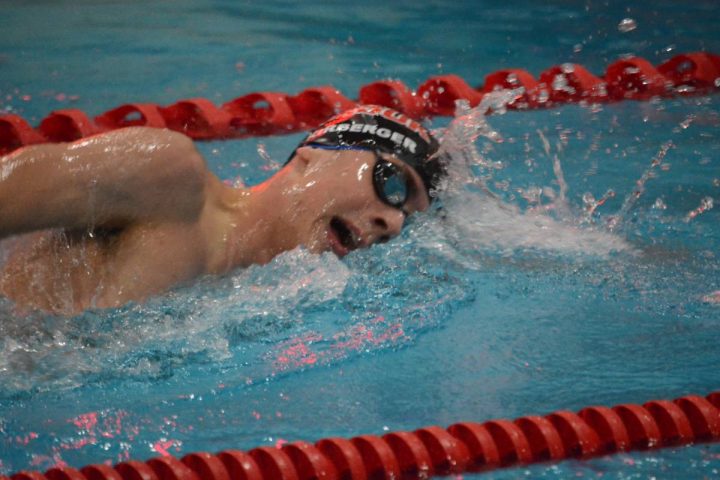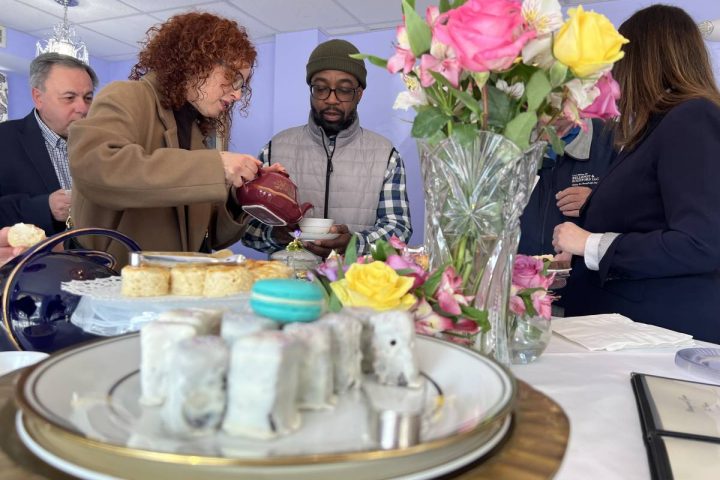Two groups of Monroe students will be among the robotics teams competing in the VEX Robotics World Championships at the Kay Bailey Hutchinson Convention Center in Dallas, Texas, this spring. This includes a Masuk High School team that made it all the way to the semifinals last year.
The group of Masuk students not only got to the final four, out of 22,000 teams from 27 countries, they were the first team from Connecticut to ever make it that far, according to teacher William “Bill” McDonough, who heads Monroe’s robotics program.
Team 4478E remains intact and they’re heading back to Dallas with a team on the rise, a group of Jockey Hollow Middle School eighth graders who make up Team 8878J.
On Monday evening, middle and high school students in Monroe’s robotics program worked on their robots in a classroom and a hallway at Masuk.
At one cluster of desks, Team 4478E worked on their robot.
“This is the fourth robot that we’re doing a full rebuild for,” said John Iacono, a sophomore. “Usually we make small changes during the season. This is more of a complete rebuild. We took all of the problems we had this year into consideration and now have a pretty solid build plan.”
Even if they have a bad day at the competition, Iacono said he and his teammates want people to see they have a well-built robot with the potential to succeed. The championships will be held from April 25 to May 4.
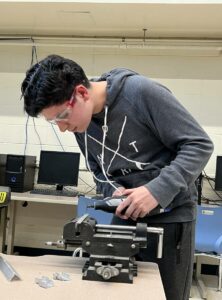
Iacono, the main builder, worked with fellow members of the drive team, juniors Matthew Mea and Ashwin Sarma, who is also the main programmer.
Liam Kelly, a junior, who is a secondary builder and scout, also tinkered with the robot, along with junior Arvin Sarm, Ashwin’s brother. Arvin is an auxiliary builder on the team.
Across the room, Lucas Cartagena, a junior, used a vice to hold a metal piece he was cutting for a component that will allow the robot to shoot string. In the end game of the competition, teams will score three points for every tile their string crosses.
Cartagena is secondary notebook and an auxiliary builder.
Secondary notebook keeps meticulous notes of build plans for the robots and an auxiliary builder makes components for the robot that can easily be removed.
The main builders work on more permanent parts such as the chassis, intakes and flywheel, according to Iacono.
Rounding out the team is a new member, Emma Cusa, a junior, who serves as project manager.
Rising talent
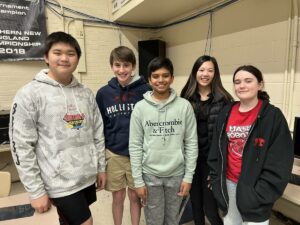
McDonough said sixth and seventh grade students in the robotics program do a lot of learning and growing.
“We hope by the time eighth grade rolls around we’ll have teams good enough to go to Worlds,” he said. “We had one team last year and one this year.”
Between middle and high school, McDonough said at least one Monroe team qualified for Worlds each of the past 11 years — including at least one from Masuk every year.
On Monday night, the eighth graders from Team 8878J fine tuned their robot for world competition.
“This year we got to do a lot more,” said Harry Li, the main builder and assistant driver.
“I think we really enjoyed it,” William Clark, a main driver and assistant builder, added. “We weren’t as restricted. At the end of this year we got to know more of the high schoolers and they helped us.”
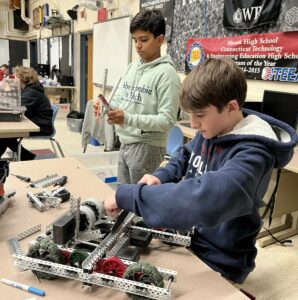
“Almost all of our decisions were inspired by high schoolers,” Li said.
The middle school team also includes Akshaj Yerragudi, main programmer and backup builder; Keira Rowley, main notebook and assistant builder; and Kristina Chen, assistant builder and assistant notebook.
Last year, Rowley said she, Li and Chen went to Worlds as scouts to help the middle school team that qualified. Aside from scoring points by completing tasks with their robots, teams scout other teams for alliances during competitions.
“It’s exciting to be able to compete this time,” Rowley said.
“It’s also a new experience,” Chen said. “We have less restrictions on parts than at the beginning of the season.”
Li said the high school teams have priority over parts, but now that only two teams are left, their middle school team has more parts to choose from for their robot.
Rowley said they were making their robot smaller for Worlds and Li estimated their team was 25 percent done. He said Team E gave them advice on the design.
“We want to take in the competition, so next year we can do better,” Clark said.
“It’s more about having fun, the experience and learning new things, but at the same time you have to get your work done,” Chen said.
When they take robotics in high school next year, Li said Team 8878J plans to remain intact.
“We work well together,” Rowley said.
Rules of the game
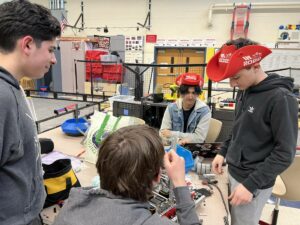
During the Worlds competition, the playing field has two baskets, one red and one blue. The blue team scores three points for each yellow disc its robot shoots into the blue basket, and vice versa.
Below each basket, there is a low goal of the opposite color. If a team’s robot misses a basket and the disc ends up in the goal below, the other team gets a point.
Teams can also choose to shoot discs in the lower goal for their own color to gain a point for each disc.
In the end game, robots shoot string with three points per tile. Iacono said these points can add up and give a team an edge.
“I would say our end game took us to worlds,” he said. “It’s probably the most overlooked part of the game. You can score up to 84 points in the end game.”
Having the best robot is not all a team needs to win a competition, according to Iacono. Other key factors include talent of the drivers, strategies and alliances.
He said a willingness to assist other teams during a competition increases the chances of gaining an alliance later on.
“Alliances are a big part of the competition,” Iacono said. “That will make or break you. As long as we check all the boxes, our robot works well and we get a good alliance, we’ll have just as much of a chance as last year.”
Growing pains
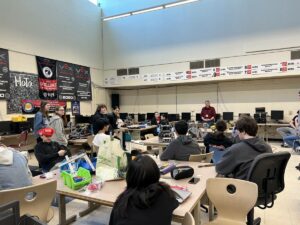
Prior to robotics students work on their robots Monday evening, McDonough got them together in a classroom to reflect on the season.
He told them any suggested changes to their robots could wait until next year, when there will be new specifications and rules. Instead, McDonough talked about team chemistry.
“We need better team chemistry,” he said. “This year we had teams of seven become teams of four. We had teams that started out with enthusiastic teammates, who lost their enthusiasm later in the year.”
“I want them to spend some time reflecting on their successes, their struggles, their failures, how they can improve themselves and their team,” he later told The Sun. “It’s not a 15 minute process. I want them to really think about it.”
Over the past few years, Monroe’s teams benefited from experienced students who were fortunate to have natural leaders among them, according to McDonough.
McDonough said two students who emerged as leaders this year were seniors Matt Bernier and Joshua Ofori-Nkansah. Though their own teams did not qualify for Worlds, both helped out Monday night.
Ofori-Nkansah’s family moved to Monroe from the Bronx, N.Y., last year.
“The season was all over the place for everyone,” he said. “The last three months everybody started to really come together. This year was mostly about leadership and rallying together. Next year should be less hectic.”
“I spent as much time as I could mentoring the younger students,” Bernier said. “Overall, it was pretty successful. A lot of people learned a lot of things and learned as they went. I think it’s going to be better.”
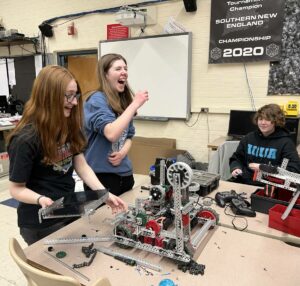
Of Monroe’s 77 students who competed in the Regionals at Walsh Middle School in Framingham, Mass., this year, 46 were freshmen and sophomores. But the talent is there.
Despite their youth, if the competition ended after the first day, McDonough said Monroe would be sending six teams to Worlds. But they lost momentum on day two, when the teams that qualified were whittled down to two.
“We had a very successful year,” McDonough said. “There was a lot of growth and we have an experienced core coming back next year.”

